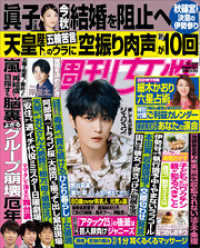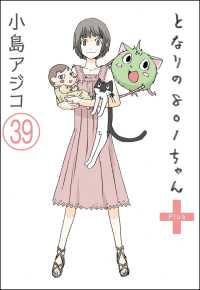- ホーム
- > 洋書
- > 英文書
- > Literary Criticism
Full Description
The first book-length study to explore the importance of genre fiction for the body of literature we call lesbian modernism
Elizabeth English explores the aesthetic dilemma prompted by the censorship of Radclyffe Hall's novel The Well of Loneliness in 1928. Faced with legal and financial reprisals, women writers were forced to question how they might represent lesbian identity and desire. Modernist experimentation has often been seen as a response to this problem, but English breaks new ground by arguing that popular genre fictions offered a creative strategy against the threat of detection and punishment. Her study examines a range of responses to this dilemma by offering illuminating close readings of fantasy, crime, and historical fictions written by both mainstream and modernist authors. English introduces hitherto neglected women writers from diverse backgrounds and draws on archival material examined here for the first time to remap the topography of 1920s-1940s lesbian literature and to reevaluate the definition of lesbian modernism.
Key Features:
Rethinks the lesbian modernist project to demonstrate that genre fiction not only influenced modernist writers such as Woolf and Stein but also found its way into their ostensibly highbrow workBrings to light hitherto neglected mainstream writers working in popular genres who contributed to the lesbian modernist aestheticSituates Katharine Burdekin within the context of lesbian modernism for the first time, employing hitherto unseen archive material (including letters and manuscripts)Divided into three broad multi-author genres (fantasy, historical and detective fictions), the study covers popular fictions such as utopian writing, the supernatural, historical biography, historical romance, and the classic country-house crime novel
Contents
Acknowledgements
Series Editors' Preface
Introduction: Foul Minds and Foul Mouths - Censorship and a Turn to Genre Fiction
Part I. Fantasy
Part I Introduction
1. 'The book is a sort of touch-stone to other people': Sexology, the Invert and Desire in Katharine Burdekin's Utopian Fiction
2. 'Ghost desire': The Lesbian Occult and Natalie Clifford Barney's The One Who is Legion or A.D.'s After-life
Part II: History
Part II Introduction
3. 'Spiritual progenitors' and the Historical Biographies of Margaret Goldsmith and Mary Gordon
4. 'I dislike the correct thing in clothes': Virginia Woolf's Orlando: A Biography and the Cross-Dressing Historical Romance
Part III: Crime
Part III Introduction
5. 'Murder is a queer crime': The Lesbian Criminal and Female Communities in Detective Fiction
6. 'Lizzie Borden took an axe': Repetition and Heterosexual Crime in Gertrude Stein's Detective Fiction
Coda
Bibliography
Index
-
![Get Ready?[1話売り] story48-1 花とゆめコミックススペシャル](../images/goods/ar2/web/eimgdata/EK-2142020.jpg)
- 電子書籍
- Get Ready?[1話売り] st…
-

- 電子書籍
- 週刊女性 2021年 7月13日号
-

- 電子書籍
- 【デジタル新装版】となりの801ちゃん…
-

- 電子書籍
- レッスルキャンパスvol.4 レッスル…




